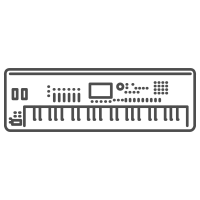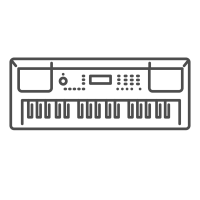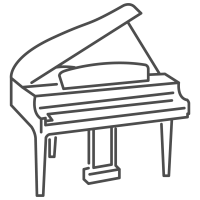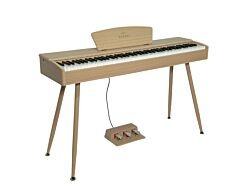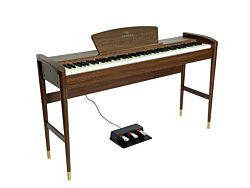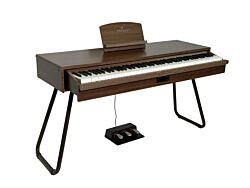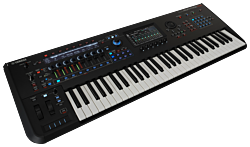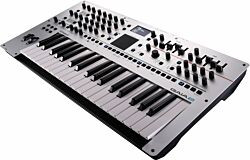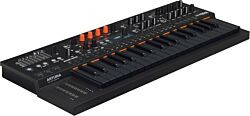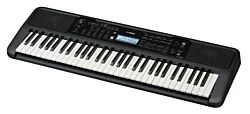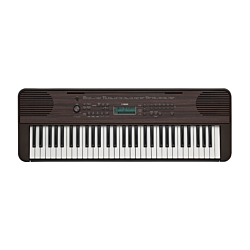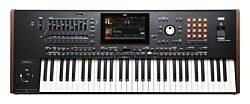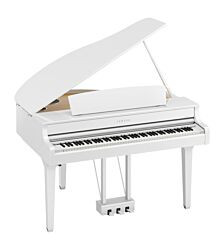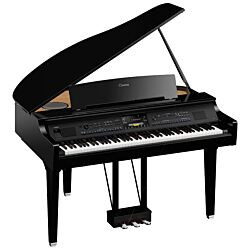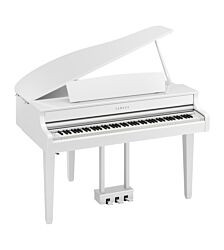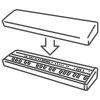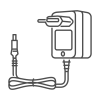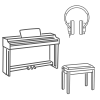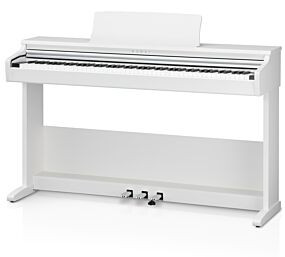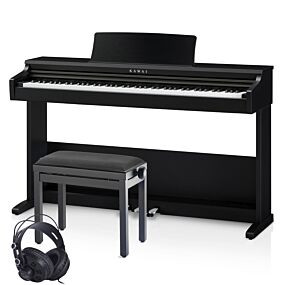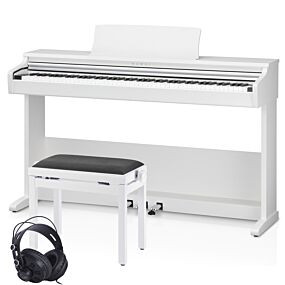An excellent introduction to Kawai digital piano quality
The KDP75 digital piano represents the newest addition to Kawai's esteemed lineup of award-winning home instruments. It seamlessly integrates an authentic weighted-key keyboard action with lifelike grand piano sounds, all packaged within an attractive and remarkably affordable unit.
Moreover, the instrument boasts USB-MIDI connectivity, built-in lesson pieces, and a convenient song recorder. These features make the KDP75 an excellent option for beginners in search of their first instrument, as well as seasoned players seeking a second piano for silent practice with headphones.
Design of the KDP-75
The KDP lineup from Kawai is primarily designed for home-based use. The KDP-75's substantial weight mainly comes from its wooden body construction. Its large cabinet design and furniture-like styling make it ideal for placement in the living room. The cabinet is both simple and visually appealing, featuring gently curved side arms and wooden toe blocks for added stability. However, if portability is a priority for you, you might want to consider Kawai's Yamaha P-525 as an alternative option.
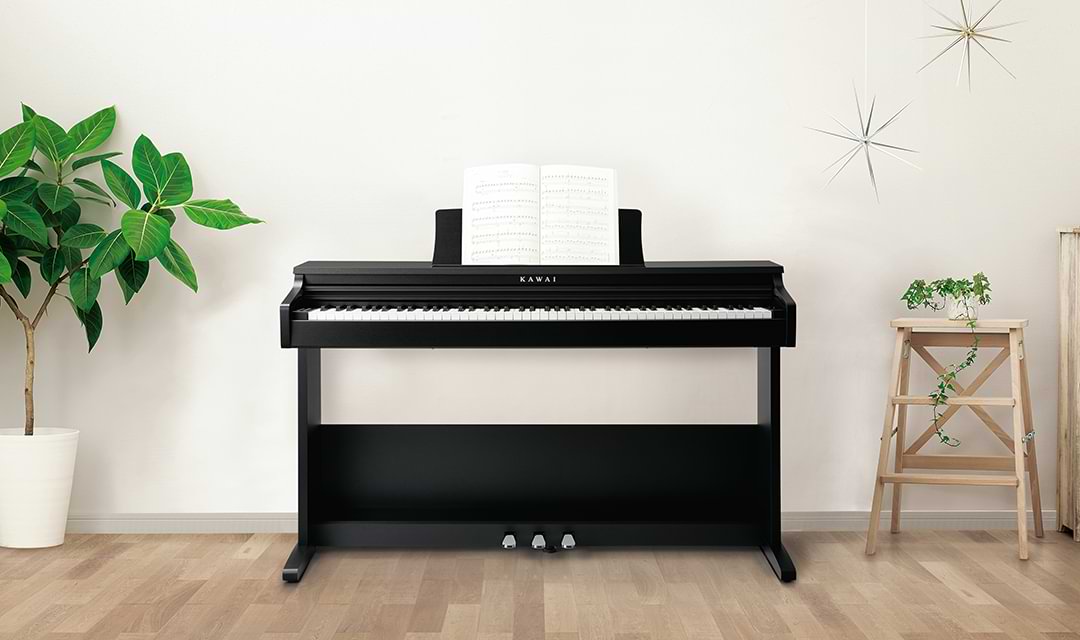
- In terms of dimensions, the KDP75 is 134 cm” (W) x 40 cm” (D) x 84cm” (H). In terms of weight, it is 36 kg. The KDP75 is compact, making it ideal for apartments and other narrow spaces.
- It includes a retractable key cover to shield the keyboard from dust and a wide music rest that can be folded flat when not in use.
- The KDP-75 is available in 2 color variations, Embossed Black and Embossed White.
User interface
The main downside of the KDP-75’s design is its over-simplified user interface. The KDP-75 uses the same button/key control scheme featured on the original. This means you need to press a button and the corresponding key to access most of the functionality. A real acoustic piano does not have a ton of buttons after all, which makes a minimal user interface even more desirable.
On the other hand, people like me might find the lack of controllability to be an inconvenience that harms the overall usability of the digital piano.
Keyboard
The KDP75's keybed comprises 88 grade-weighted keys utilizing Kawai's Responsive Hammer Compact (RHC) action. While considered one of Kawai's more budget-friendly actions, the RHC keys exhibit considerable competence. While there are naturally a few compromises present, it effectively replicates the essential feel of playing an acoustic piano.
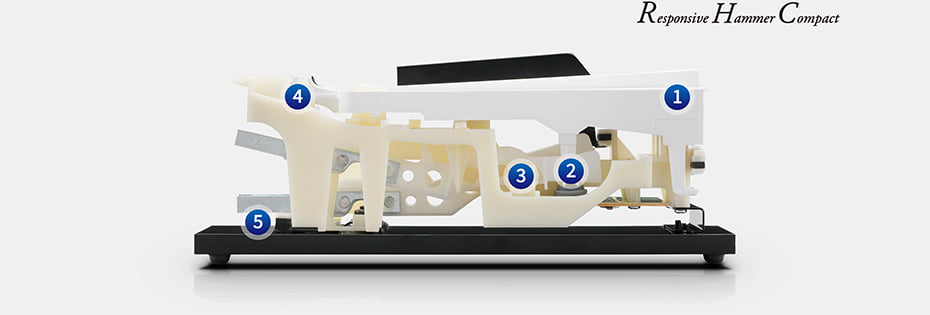
The RHC Keyboard action is a dual sensor action, which means the KDP75 uses two sensors to track how hard each key is pressed down, before then triggering a recorded piano sample of the corresponding intensity.
If you’re a seasoned pianist who plays challenging pieces that require precision in the fast repetitions, you’ll likely find the KDP75 inadequate. However, it works well enough if you’re using it for casual playing.
Graded hammer action
The KDP75's keyboard is also graded, mirroring the weightier feel of keys in the lower registers compared to those in the higher octaves, thus further replicating the authentic response of a real acoustic piano.
While my comparison of the KDP75 to its counterpart may have appeared critical, it's important to emphasize that the KDP75 still offers a commendable keybed, delivering a natural playing experience at a budget-friendly price point.
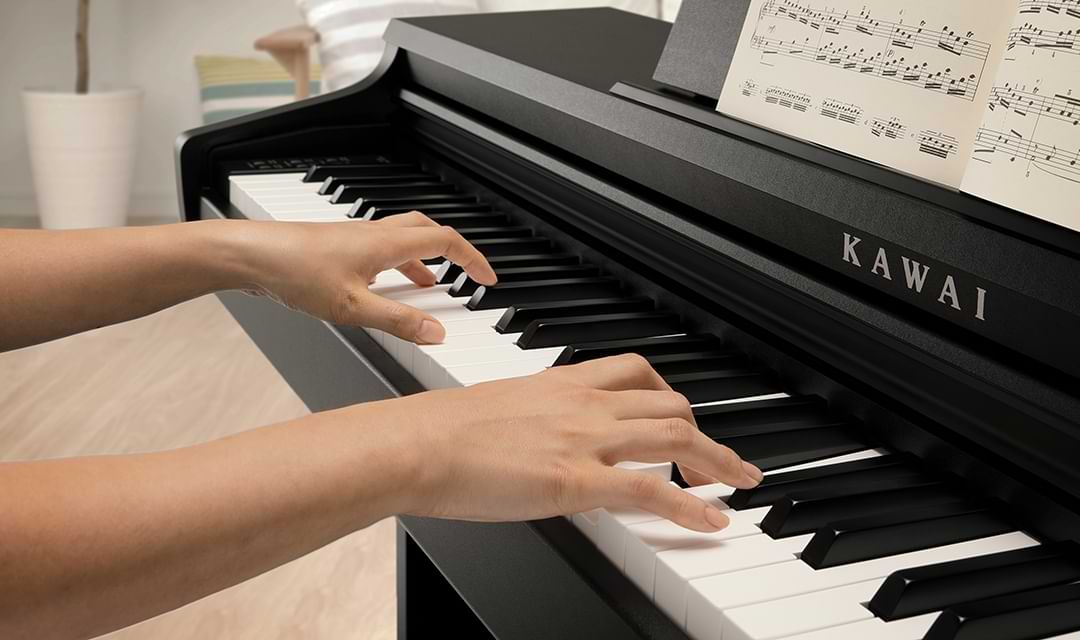
Sound
The KDP75’s included sound set is easily its greatest asset. This features 15 sounds powered by Kawai’s Harmonic Imaging (HI) sound engine, which includes the following sounds.
-
Piano: 4 variations of the SK-EX concert grand
-
Piano: Classic and Modern
-
Organ: Jazz and Church
-
Harpsichord
-
Vibraphone
-
Strings: 2 variations
-
Synth Pad: 2 variations
-
Choir
It also has a 192 note maximum polyphony
Concert Grand Sounds
The KDP75's HI sound engine may appear basic compared to the modeling technology utilized by other piano manufacturers. However, Kawai diverges by prioritizing their recording techniques, striving to faithfully reproduce the exceptional qualities of their flagship concert grands.
The default 'Concert Grand' preset on the KDP75 originates from Kawai's esteemed SK-EX (Shigeru Kawai – EX) piano. These concert grands stand as some of Kawai's most revered instruments, favored by concert halls worldwide. Kawai proudly refers to the SK-EX as "The premier piano of Japan".
The SK-EX samples showcased on the KDP-75 are impressive, capturing the versatile sonic signature that has made the SK-EX so renowned.
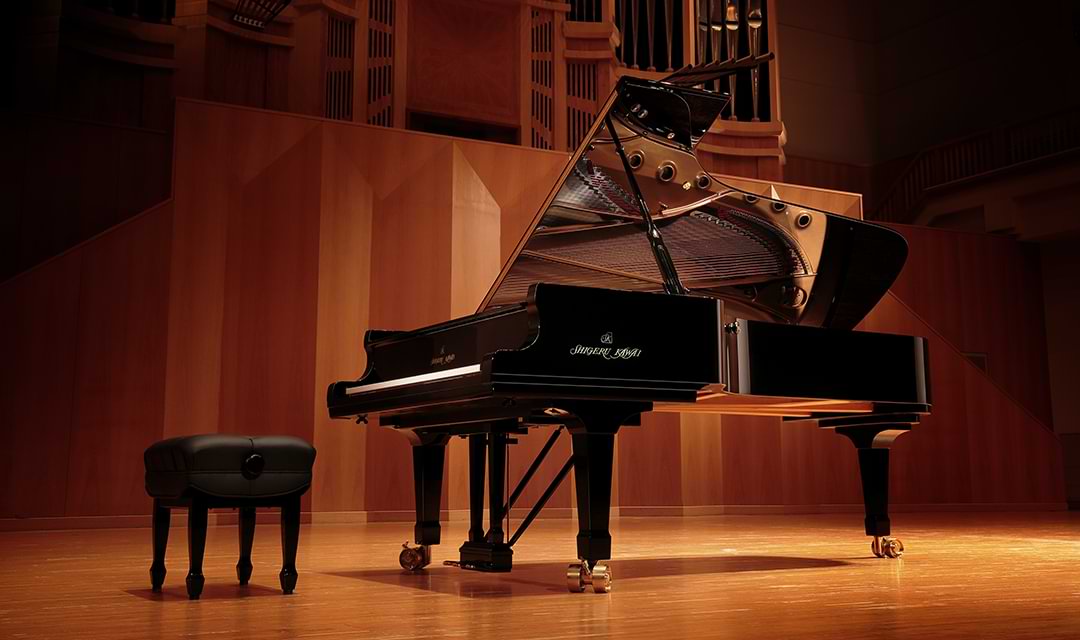
Speakers
The KDP-75 features dual 9W speakers, each sized at (8 x 12 cm) x 2.
These downward-firing speakers produce a satisfactory sound, delivering clarity when played at moderate volumes, which makes them suitable for home-based use.
Furthermore, the KDP75's volume variation between its loudest peaks (fortissimo) and quiet parts (pianissimo) is less pronounced. This characteristic, while maintaining a consistent sound, can make the KDP75 seem less expressive compared to some other models.
Song Recording
The KDP75 includes 15 demo songs, which show off each of the included presets with professionally played pieces.
There are also 5 lesson books and 40 concert magic songs included.
For your own compositions, the KDP75 allows you to record up to 3 different songs into the internal memory, each song storing approximately 10,000 notes.
To access these functions, all you need to do is hit the dedicated button on the front panel.
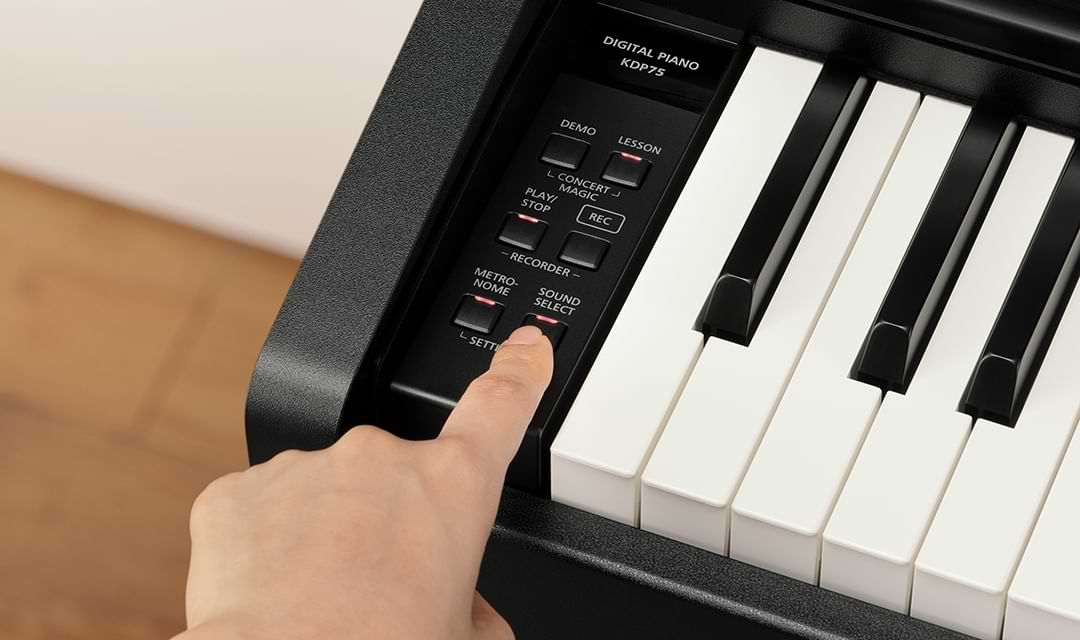
Functions
Here are a few notable settings present on the KDP75:
-
The central tuning of the middle A can be modified in increments of 0.5 Hz, in the range of 427.0 Hz to 453.0 Hz.
-
This allows you to change the played key within a 12-semitone range.
-
Plays a steady rhythm for practice purposes, tempo and time signature can be set.
-
Available through the Virtual Technician app. Includes Equal, Pure Major/Minor, Pythagorean, Meantone, Werckmeister and Kirnberger temperament types, with a modifiable temperament key.
-
DAMPER RESONANCE. Separate from the Virtual Technician, allowing a modifiable intensity rate for the damper resonance effect.
Most of the features on the KDP75 are accessible through the onboard controls, though I’d recommend using Kawai’s PianoRemote smartphone app instead for a more pleasant editing experience.
Modes
The KDP75 includes Dual mode and Four Hands mode.
Dual mode is commonly referred to as ‘layer mode’, and allows two sounds to be triggered simultaneously with each key press. For example, you can layer an acoustic and electric piano sound to get an otherworldly, rich tone well-suited for ballads.
Four Hands mode splits the keyboard into two equal halves, sharing the exact same octave range. This is a mode primarily used for teaching purposes, where an instructor sits alongside their student, facilitating more convenient demonstrations.
One mode that is notably absent is split mode, which allows two different sounds to be assigned to the left- and right-hand sides of the keyboard. However, I am willing to accept this compromise, as the KDP75 does not come with any bass sounds.
Kawai's apps
With all that said, there is a workaround for these complaints. Kawai has the PianoRemote and PiaBookPlayer app, which can be linked up to the KDP75 via the USB to Host port, giving you a touchscreen interface for easier control.
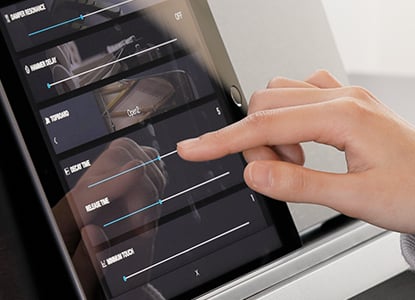
Accessories
The default package of the Kawai KDP75 includes the following accessories:
-
Owner’s manual
-
AC adaptor
Overall, the KDP75 provides a comprehensive package, requiring no additional purchases to get started. However, we suggest investing in a good pair of headphones for late-night practice sessions without disturbing neighbors.
You can also purchase our package which includes the Kawai KDP-75 along with a bench and headphones. This package is available in both black and white.
Conclusion
In conclusion, the KDP75 offers a remarkable array of features and capabilities, specifically tailored to meet the diverse needs of piano enthusiasts. It serves as an ideal digital piano for beginners, especially those residing in small spaces, thanks to its compact design and comprehensive functionality.
We also invite you to visit our Showrooms in Aarhus, Copenhagen, Helsinki or Stockholm so you can play any of our piano models and choose the one that fits your needs the most.
You can find the locations here:



